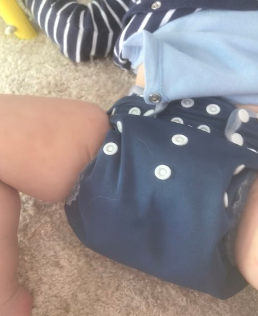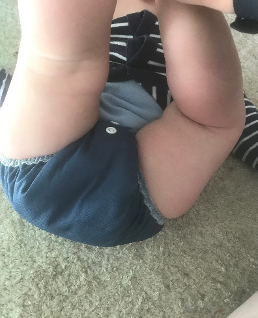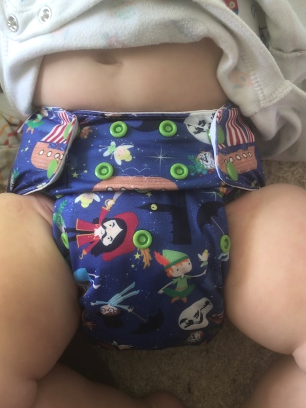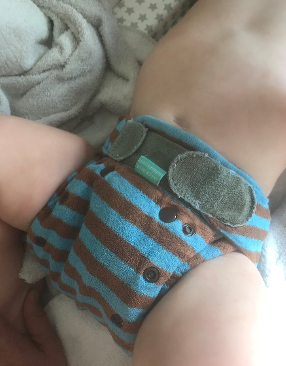Fit Guide for Unos, Simplex and Bamboozles
- The Baby Tribe & Authors

- May 30, 2020
- 5 min read
An article by Michelle Llewellyn
A friend of mine recently asked for advice on starting up with reusable nappies.
As I have gone a bit nappy buying crazy during lockdown, I have nappies I can spare so I offered to lend her some to try.
As I can’t do a live demo because of lockdown I wrote her a quick beginners guide.
This guide is purely based on my experience, in particular the washing guidance is what I find works for me.
**There are many washing variations so you should check the guidance from the nappy brand for guidance to ensure you don’t invalidate your warranty.**
The nappies lent out were:
Motherease Stay dry uno
Motherease Organic uno
Blueberry Simplex
TotsBots bamboozle
Motherease Airflow wrap
The guide is therefore based on these brands.
All in ones
All in Ones require no prepping and are the closest thing to a disposable you can get.
They can all be boosted with extra inserts if needed.
General fit guide for All in Ones:
You fit an all in one the same way you fit a disposable using either Velcro or poppers. However, a reusable generally sits lower than a disposable and should sit just above the bum crack.
It shouldn’t be too tight around the waist; you should be able to get 2 fingers down the nappy (this gives your baby’s belly enough space for when they sit).
Make sure it is smooth around the waist and none of the material is ruffled.
Most all in ones need to be tucked into the knicker line and shouldn’t sit around the thighs.
Make sure any internal fabric is tucked in as this can wick and cause leaks.
When you lift the legs up there should be no gaps.
If you have gaps at the legs then you need to do some of the rise poppers up, which are the two/three rows of poppers below the waist poppers.
Make sure you tuck the material up to tighten the leg gaps and down to loosen them, if you need to loosen the leg gaps, push the excess down.
Motherease Uno:
Staydry – Made from 100% polyester fabric designed to keep wetness away from the skin. You do not need a liner.
Organic – Made from cotton. Generally, holds more than a staydry but you will need a liner to keep moisture away from the skin. This material can go quite crisp in hardwater but if you use a fleece liner then it doesn’t matter too much as the soft fleece will be against the skin. Rub the cotton together for a few minutes to reduce the crisp feeling.
I find Unos the easiest to fit and require hardly any adjusting.
You can generally just popper them up, smooth the waist and you are done.
The binding around the legs means there is no fabric to tuck in.
Fit pictures:
Blueberry Simplex:
These have an tongue attached that can either be tucked into the pocket or laid flat on top of the nappy. You can fold the tongue in half for a ‘boy’ fit.
I always lay it flat on top, so the fleece goes against the skin.
These are also easy to fit but sometimes require a bit more adjusting to ensure all the fabric is tucked in.
Roll the internal fabric at the legs to make sure it doesn’t sit outside the nappy.
Fit pics:
Night Nappies/All in twos
All in twos are a separate nappy with a waterproof wrap.
The nappy can be a fitted terry nappy or a prefold. I have only ever used a fitted terry so can’t comment on the prefolds.
Fit guide for Bamboozle with Airflows:
The terry nappy is fitted the same way as an all in one.
You don’t have to worry about tucking in any fabric as the whole nappy will be covered with the wrap.
As mine are for night-time I include some extra boosters.
The matching booster is poppered into the terry.
The smaller booster goes on top of that and then the liner on top.
The nappy then goes on.
The larger booster then goes on top of the terry, so it sits between the nappy and the wrap – this booster is possibly not needed anymore as my baby doesn’t feed several times in the night, but I include it anyway!
The wrap then goes over this.
Airflow wraps are designed to be baggy. The air flow helps wick away moisture.
They should be tight at the waist, like an all in one, but they sit on the thighs and are not tucked into the knicker line.
They fit a bit like big bloomers.
Gaps at the legs are fine but you shouldn’t be able to see any of the nappy pocking out.
Storing and washing
Wet and dirty nappies should be stored in a nappy bucket lined with a mesh bag.
Any poo should be removed wherever possible by plopping them down the toilet or a quick rinse.
The mesh bag can be lifted out the bucket and into the washing machine, so you don’t have to handle the dirty nappies.
The nappies will fall out of the bag as they are washed.
I do a daily quick wash with half a dose of detergent for that day’s nappies.
I then transfer them to a laundry basket with holes in until the main wash. The holes allow air to flow and stop ammonia build up.
I do a main wash every 3rd day. The frequency of washing is dependent on how many nappies you have. You may need to wash every day or every other day until you have a stash built up. I wouldn’t leave it any longer than 3 days though.
Daily wash – A wash at either 40 or 60 for between 30 and 60 minutes with half a dose of detergent
Main wash – A wash at either 40 or 60 for between 2 and 3 hours with a full dose of detergent
You can do a rinse cycle at the end if you wish to ensure all detergent has been removed.
You should use Bio powder, if possible, that does not contain any optical brighteners. These tend to be the colour detergents. I use either Tesco colour or Ariel colour.
Powder is recommended rather than liquid as liquid can build up in your nappies.
You should dose it for heavily soiled items based on the hardness of your water.
You should not use fabric softener as it coats the nappy and reduces its absorbency.
You should not use stain remover.
The main wash should be ¾ full when wet so there is enough agitation to clean the nappies. You will need to bulk the wash out with other items.
I tend to use the kid’s clothes, muslins and small towels and blankets.
Avoid large towels as the nappies can get tangled in these and not wash effectively.
The nappies should come out smelling of nothing.
If they smell of wee, then you need to increase the dose of detergent.
If they smell of detergent, then you should either reduce the dose or run a rinse cycle to remove any excess detergent.
Nappies should be either line or airer dried.
They should not be placed directly onto a radiator.
They can be tumble dried on a very low heat setting but this should be avoided if possible as it reduces the life of your nappies.
If you have any problems or need any advice, then please contact The Baby Tribe and someone will be happy to help.
Alternatively, head over to the Facebook group – The Baby Tribe chat and parenting group where you will find lots of members more than willing to help.



























Comments